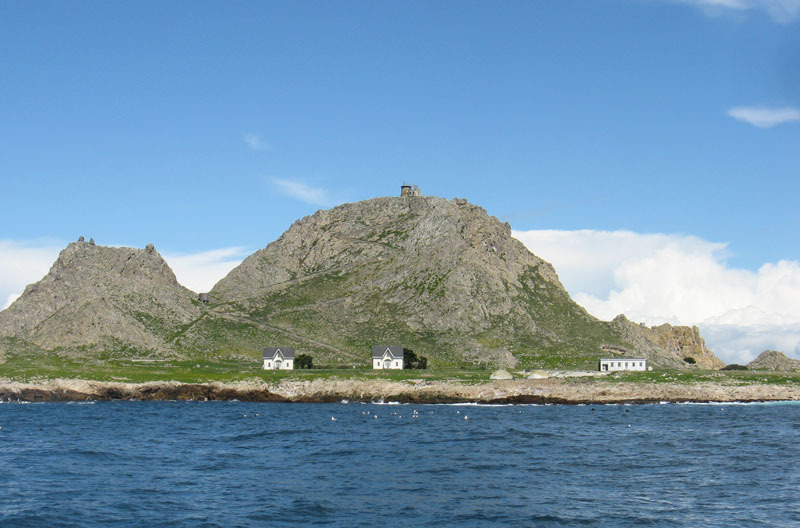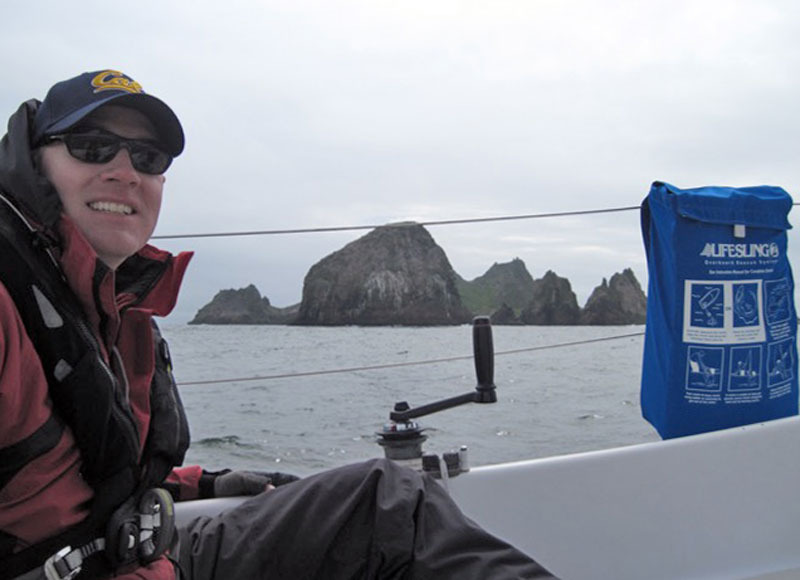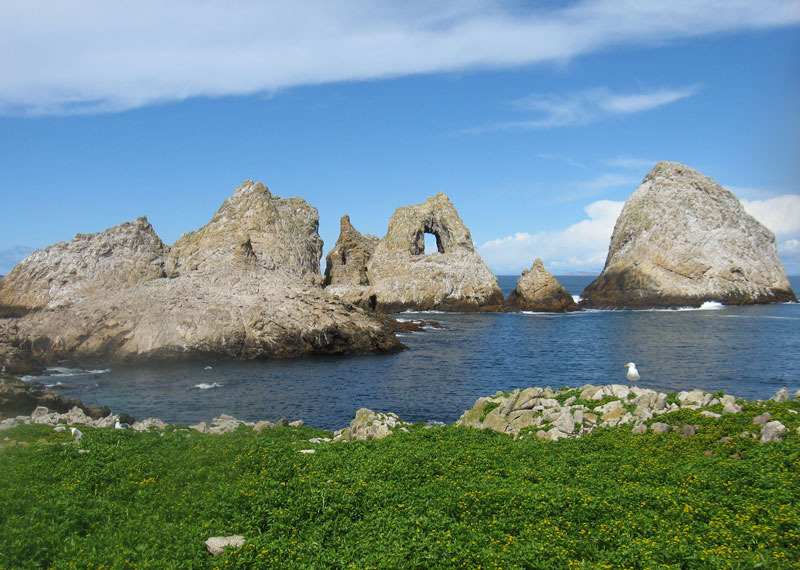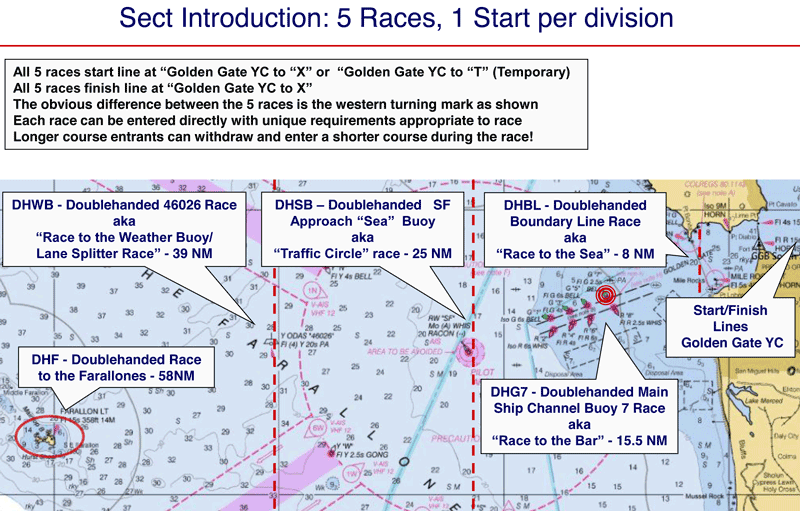
About Those Doublehanded Races
Winter takes her last breath, as tomorrow is the first day of spring. With spring, the Golden Gate opens to offshore racing. Kicking off the season, the Bay Area Multihull Association will run their doublehanded races out the Gate on Saturday, March 24.

Pat Broderick, who will sail his Wyliecat 30 Nancy, imparts some knowledge about the ultimate rounding mark: "San Francisco is about 28 miles over the horizon from Lighthouse Hill. The old lightkeepers’ houses are now used by the bird observatory folks. Southeast Farallon Island is actually a small group of hilltops sticking out of the Gulf of the Farallones. They are on the Pacific Plate, sliding northward and originated hundreds of miles to the south. But, not to worry. They’ll still be visible from San Francisco for a few more millions of years."

SE Farallon is the green island. There’s also the rocky Maintop Island, the small Seal Rock and several other islands and rocks. "There is a narrow crevice between the Farallon and Maintop Islands, just a small gap really, too wide too cross and too narrow to sail through.
"The break in Maintop Bay is the most dangerous part of sailing around the island; when the seas are really up, it can break nearly half a mile out — and the break can be nearly 50 feet high, slamming into the cliffs a hundred feet up. The rock face is polished.
"On Saturday we will round the end of Maintop Island, and then sail to the south of Seal Rock. It usually takes about half an hour just to sail around." A 2-knot ebb will give the fleet an assist out the Gate this year.

"While sailing in the Gulf of the Farallones we constantly monitor the sea state. On the way out, we face the oncoming swells, but on the return they come over the left side of our stern. Getting caught by a ‘sneaker wave’ can result in a cockpit full of water and wet foulies, and it’s dangerous. But, surging down the face of a large swell can produce boat speeds in the mid-teens, so we do try to take advantage of that."
If conditions are too gnarly at the islands, or if teams want to venture out the Gate but not go the whole distance to the islands, they have a choice of four shorter courses. Regatta Chair Bob Naber explains: "If you’re in the Doublehanded Farallones and you want to drop out you can go home or enter one of those shorter courses. If you’re past the Weather Buoy same thing; now there are three choices. Sea Buoy (Lightship) has two shorter courses. G7 is the first channel marker on the inside on the north. Go home or enter the Race to the Boundary Line. (The Boundary Line is technically an in-the-Bay race. It’s nominally the COLREGs line.)" Navigating any of the shorter courses is simple: the boat must simply tag the given longitude, not sail around a buoy.

Equipment and education requirements and the entry fee vary depending on the course each skipper signs up for. The cost will increase after today and again following the skippers’ meeting, which will be held at Oakland Yacht Club in Alameda this Wednesday, March 21, with doors opening at 5:30 p.m. Included will be a DSC radio demo; folks from the Pacific Cup will be on hand as well.
Friends, family and fans will be able to track some of the competitors on Jibeset.
